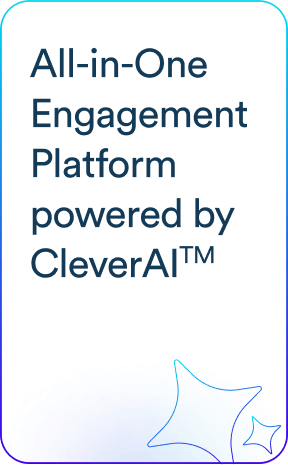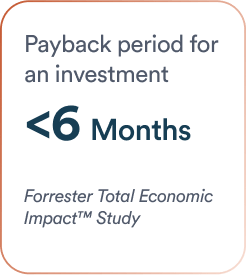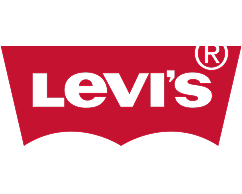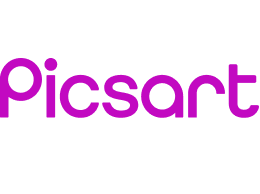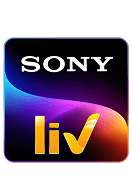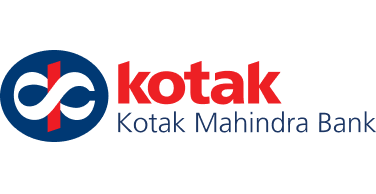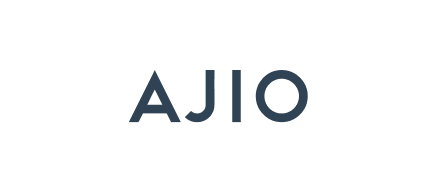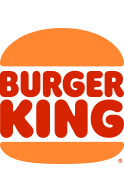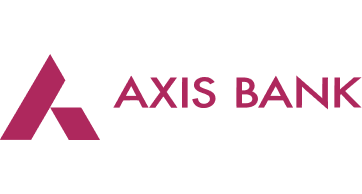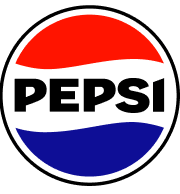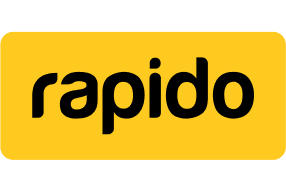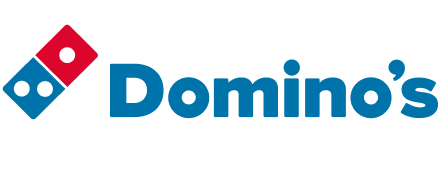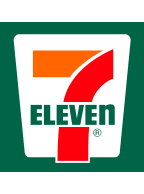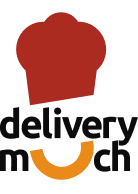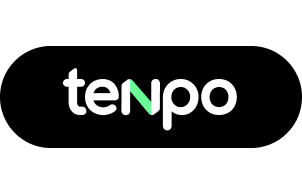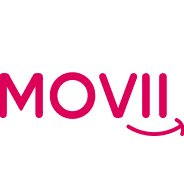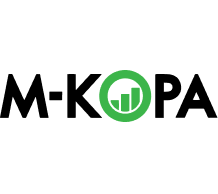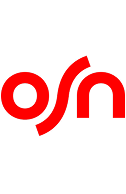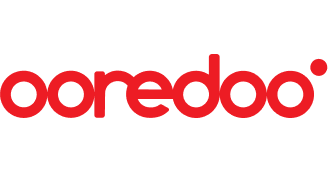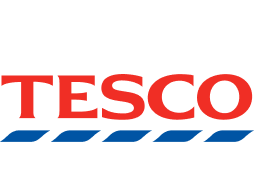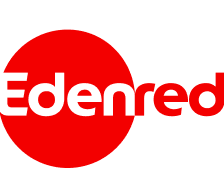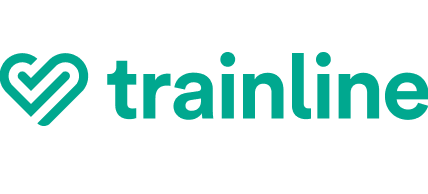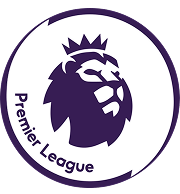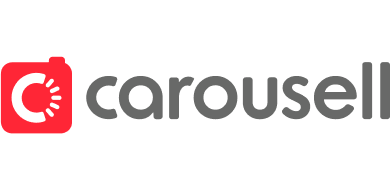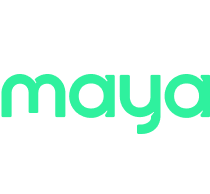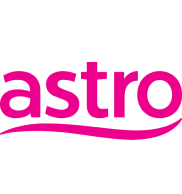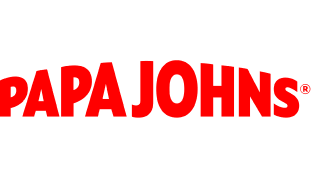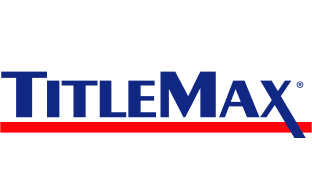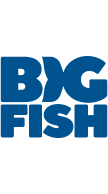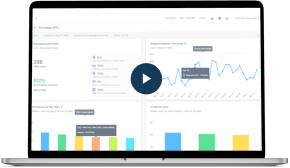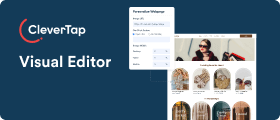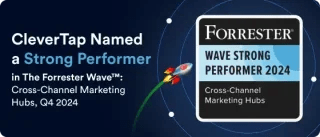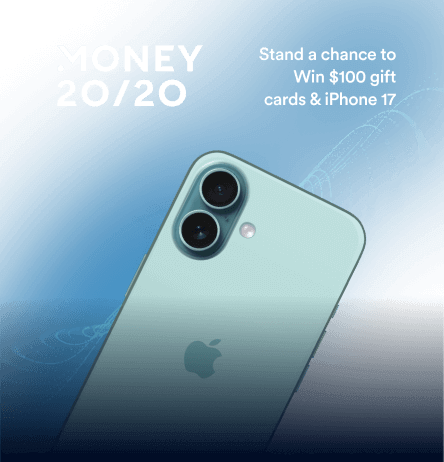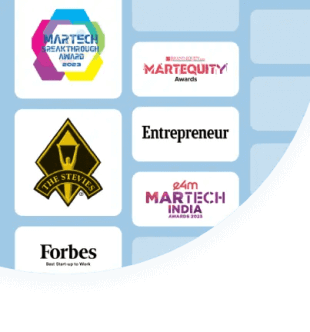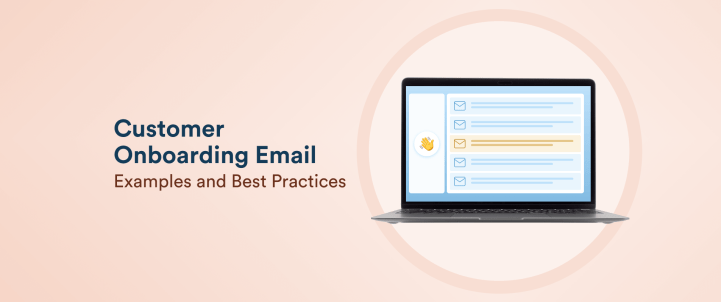Onboarding emails are key touchpoints that turn new users into engaged, long-term customers. Poor onboarding can cost sales: 21% of new users abandon an app after a single use. The purpose of onboarding emails is to introduce the user to your brand and product, explain benefits, and reduce friction.
A good onboarding sequence can significantly improve user retention and revenue. Bain & Company found that increasing customer retention by just 5% can boost profits by over 25%. In short, effective onboarding emails help users find value quickly and stick around.
In the sections below, we’ll define onboarding emails, explain why they matter in email marketing, outline five essential onboarding email types (with pro tips), showcase 14 real-world examples, and share best practices to help you personalize, time, and optimize each email.
What Are Customer Onboarding Emails?
Customer onboarding emails are automated messages sent to new customers immediately after signup or purchase. Their purpose is to welcome and educate users, help them find value in the product, and guide them toward key actions.
Unlike a one-off promotional email, onboarding emails are typically part of a sequence in email automation workflows that unfolds over days or weeks as the user starts their journey.
- Onboarding sets expectations and builds a relationship early on. It should demonstrate value right away so users keep coming back.
- Each onboarding email should educate or encourage the user, from how-to guides and tutorials to social proof and support offers.
- Most onboarding emails are automated based on events (e.g., “sign-up” or “first purchase”). This ensures timely delivery.
These emails are distinct from other marketing messages. They focus on user activation and education rather than promotion. This early engagement is critical: 63% of users say onboarding is a key factor in choosing a product.
Onboarding Emails vs. Welcome Emails
Although often used interchangeably, welcome emails are a subset of the broader user onboarding strategy. A welcome email is usually the first message sent right after a user signs up or makes a purchase. It typically thanks the user and may include a quick introduction or a special offer. A welcome email’s main job is to make a positive first impression and set the tone.
While the welcome email kicks things off, subsequent emails focus on activation, education, and retention.
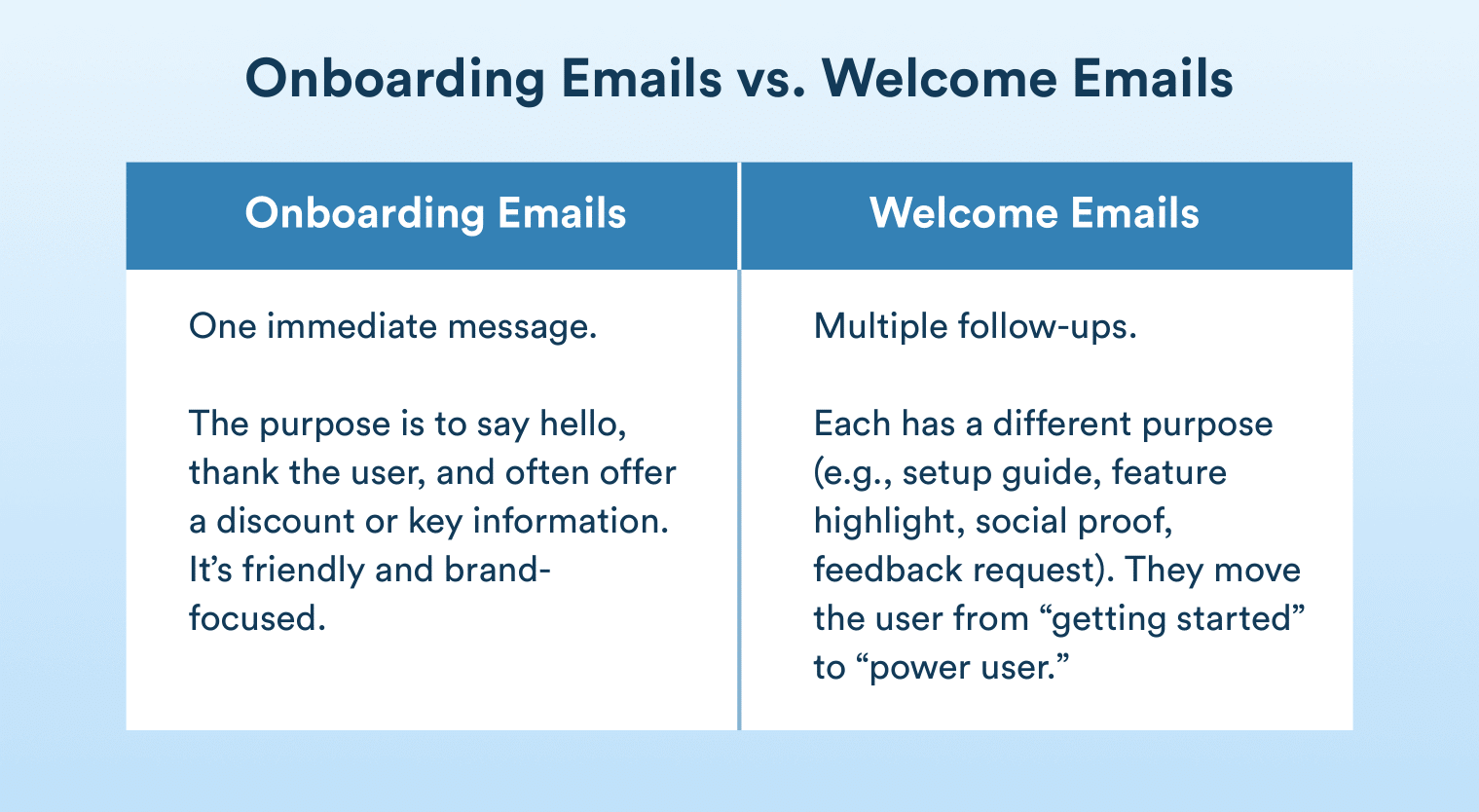
- Welcome Email: One immediate message. Purpose is to say hello, thank the user, and often offer a discount or key information. It’s friendly and brand-focused.
- Onboarding Emails: Multiple follow-ups. Each has a different purpose (e.g., setup guide, feature highlight, social proof, feedback request). They move the user from “getting started” to “power user.”
Why Customer Onboarding Emails Are Important for Retention
A warm welcome and clear guidance via onboarding emails help customers see the product’s value sooner, which reduces churn and boosts engagement. Onboarding emails are vital to a customer retention email strategy due to:
- Higher Engagement: Welcome emails boast extremely high open rates. For example, the average open rate for welcome emails is 50%, making them 86% more effective than email marketing newsletters.
- More Conversions: Because users are most interested right after signing up, clear CTAs in onboarding emails boost your email marketing metrics. In fact, onboarding emails with clear CTAs generate 3 times more clicks than cluttered ones.
- Boosted Retention: Engaging onboarding can dramatically cut churn rate. Users who receive timely tooltips during onboarding have 30% higher retention.
- User Activation: Good onboarding emails prompt users to take that first key step. For example, an activation email might encourage setting up a profile or exploring a main feature. This “first success” moment locks in new users.
- Building Habits: Onboarding emails can encourage habitual use by delivering quick wins and teaching best practices. They open communication channels and establish trust.
5 Key Types of Onboarding Emails
To cover the bases, most onboarding emails include several types of emails, each with a specific goal. Below are five essential onboarding email types, along with their purpose and key elements:
1. Welcome Email
Welcome emails help make a great first impression. They introduce your brand and set expectations. If applicable, welcome emails can also include a special offer (discount code or free gift) to encourage the first action.
Key elements include a friendly greeting, a clear value proposition, and one or two strong CTAs. You can also highlight a key benefit or offer (e.g., “Enjoy 10% off your first order”).
Pro Tip: Keep it conversational. Emphasize gratitude, not a hard sell. Clearly show what the user can do next.
2. Social Proof Email
Social proof emails build trust by showing that others love your product. Early in onboarding, new users are still on the fence. A social proof email uses testimonials, reviews, or usage stats to reassure them that they made a good choice.
Key elements include customer testimonials, expert endorsements, user counts or milestones (“Join 50,000+ happy customers”), media logos (“As featured in X”), or case study highlights. Combine quotes or ratings with visuals (screenshots, star ratings). Maintain authenticity: real photos or names if possible.
Pro Tip: Personalize the social proof to the customer’s segment. If you know they’re interested in feature Y, show a testimonial about that. For example, a fintech app might say, “95% of our active investors report confident trading within 2 weeks”.
3. Activation Email
Activation emails prompt the user to take the next key step (activate their account, complete profile, make first purchase, etc.). This email is action-oriented.
Key elements include a clear headline (“Your account is ready! Let’s get started”), step-by-step instructions or a checklist, and prominent buttons linking to the action (e.g., “Verify Email,” “Complete Profile,” “Add Your First Item,” etc.). You may show progress (e.g., “2 of 3 steps complete”) to motivate finishing setup. Keep the copy concise and task-focused.
Pro Tip: Emphasize quick wins. If the setup has multiple parts, guide them through mini-steps rather than overwhelming them.
Want to understand how to increase app conversions? Here are 25 strategies to help you.
4. Getting-Started Guide or Setup Instructions
Setup guides educate new users about how to use the product or service. This is more in-depth than the activation email, focusing on onboarding education over several features.
Key elements include walking users through the basics with a combination of text and visuals. Could be an embedded video, animated GIF (e.g., how to navigate the dashboard), or step-by-step images. Cover essential functions and tips (“Here’s how to create your first project,” “Setup takes 2 minutes”). Include links to help articles or tutorials.
Pro Tip: Break long content into sections with headings or tabs, so it’s scannable. Link to an online help center for details. End with a CTA like “Start Using [Key Feature]” or “Watch Quick Tutorial” to reinforce learning. Segment users by device or subscription: mobile users might need different instructions.
5. Product Tour or Feature Highlight Email
Product tour emails spotlight specific features or tips to deepen engagement. Once the user has basic knowledge, show them things they might not discover on their own, especially powerful or unique features that drive “Aha!” moments.
Key elements include engaging visuals (screenshots, icons) and concise copy to explain “Did you know you can do X?” Show the benefit (“This will save you 30% of your time!”). If your product has tiers, highlight what premium features offer. Focus on 1–2 features per email.
Pro Tip: Use storytelling or context. A/B test which features to showcase first based on user role or usage data. And keep it concise. Too many features at once can be overwhelming.
Use email marketing platforms like CleverTap’s dynamic content feature to personalize the feature highlight to the user’s profile or behavior (e.g., “Since you’re a [Role], try our advanced reporting tool”).
14 Real-World Customer Onboarding Email Examples
Below are 14 onboarding email examples from various industries. Each of these examples illustrates effective design and strategy.
Wuffes: Early Discount and Easy Navigation
This welcome email offers “$5 off your first order” with clear product images and a coupon code. It highlights popular categories (like “Advanced Hip & Joint”) and uses “Shop Now” CTAs. By immediately giving a discount and easy navigation, it motivates pet owners to make that first purchase.
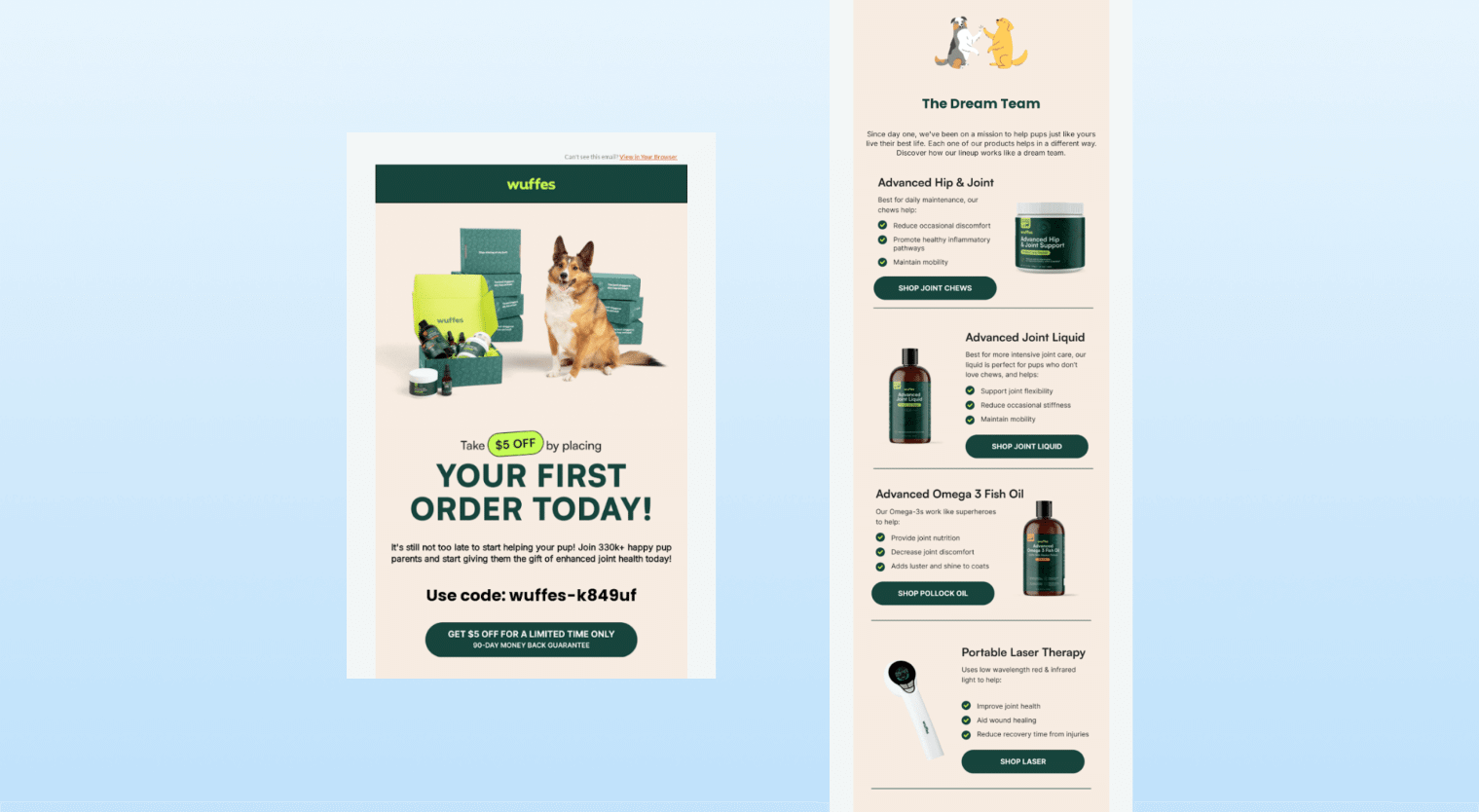
Source: Wuffles
PHLUR: Aesthetic Imagery and Quiet Upselling
A clean welcome message from PHLUR, a fine fragrance brand, highlights a discount “10% off your first order” at the top, enticing recipients to make their first purchase after signing up.
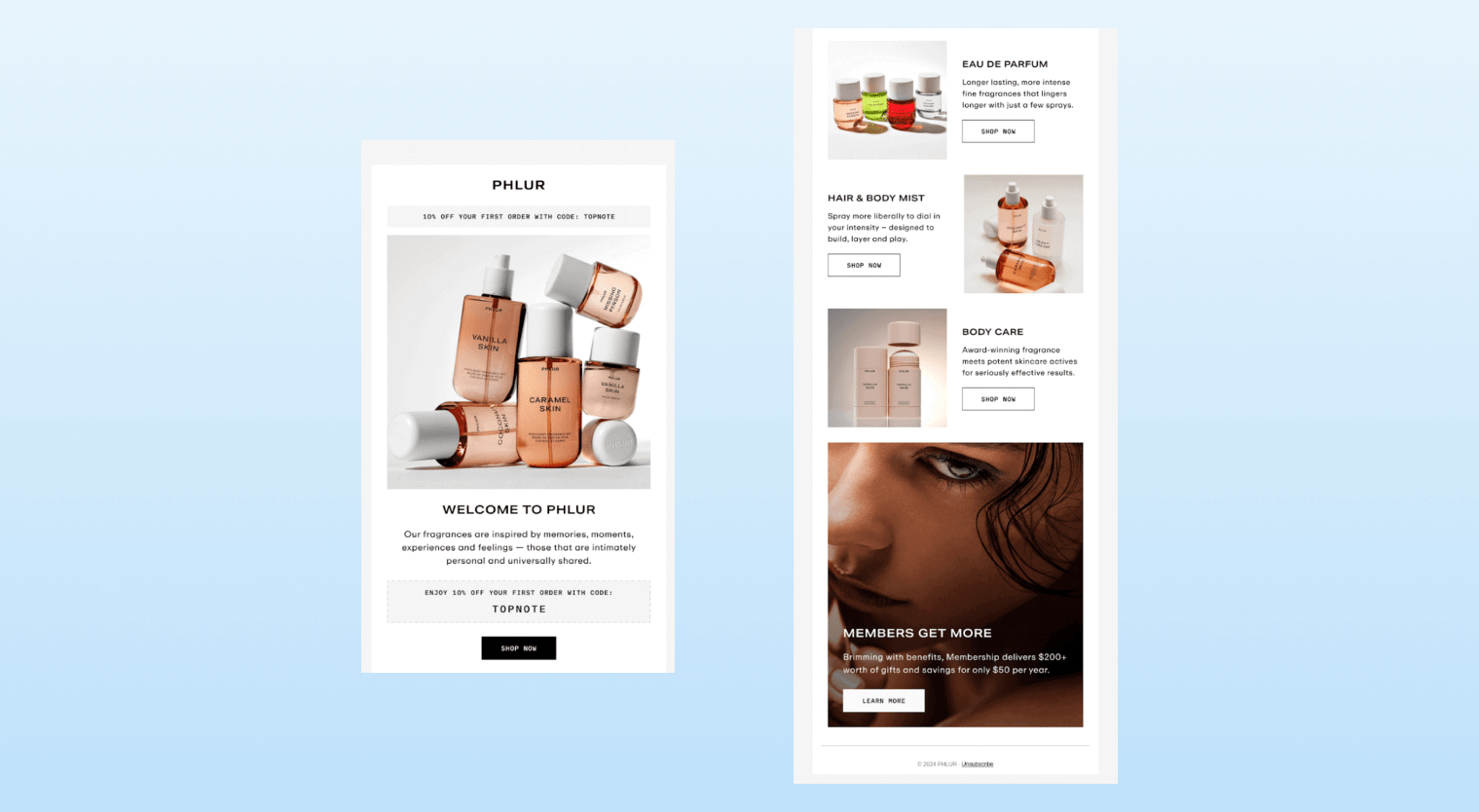
Source: PHLUR
Large, aesthetic product imagery of fragrances with simple copy “Our fragrances are inspired by memories…”) makes it personal. There’s a strong CTA button and even an upsell to a membership (“Members get more”) to encourage further engagement.
Hello Klean/Sephora: Social Proof to Build Trust and Free Gifts
This onboarding email promotes skincare with an exclusive “20% Off + FREE gift at Sephora.” This bold header text grabs attention; images of featured products (“Shower Filter 2.0”) link directly to the shop, and the callout that their product is award-winning helps build trust for new users.

Source: Hello Klean
It balances an offer with educational content about product benefits, making it both promotional and informative.
Dandy: Minimalist Design to Fit the Target Audience
The “Welcome to Dandy Team” email uses lifestyle imagery and minimal text. It simply says “WELCOME!” on a model photo, then teases a new “Love Collection” with a single “Shop Love Collection” CTA. This concise, branded email builds excitement.
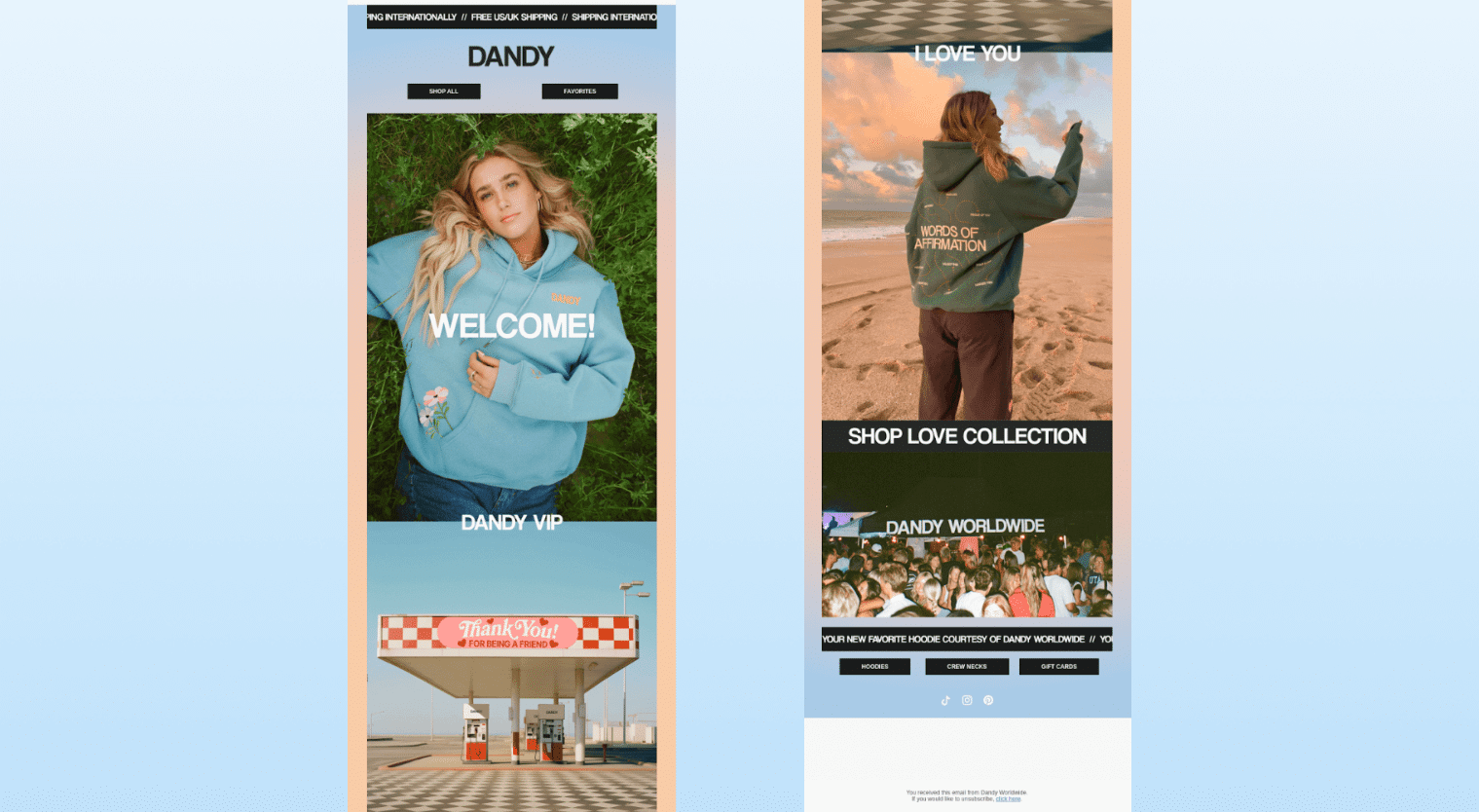
Source: Dandy
The use of warm imagery and a heartfelt tone (“Thank you for being a friend”) fits the youthful fashion audience.
Waking Up: Authentic and Authoritative Messaging
Meditation app founder Sam Harris personally welcomes the user (“Waking Up is the place I’ve put the most important things I’ve ever learned.”). The aim of this onboarding email is to steer new users to listen to their introductory course, which is a great way to drive initial engagement.
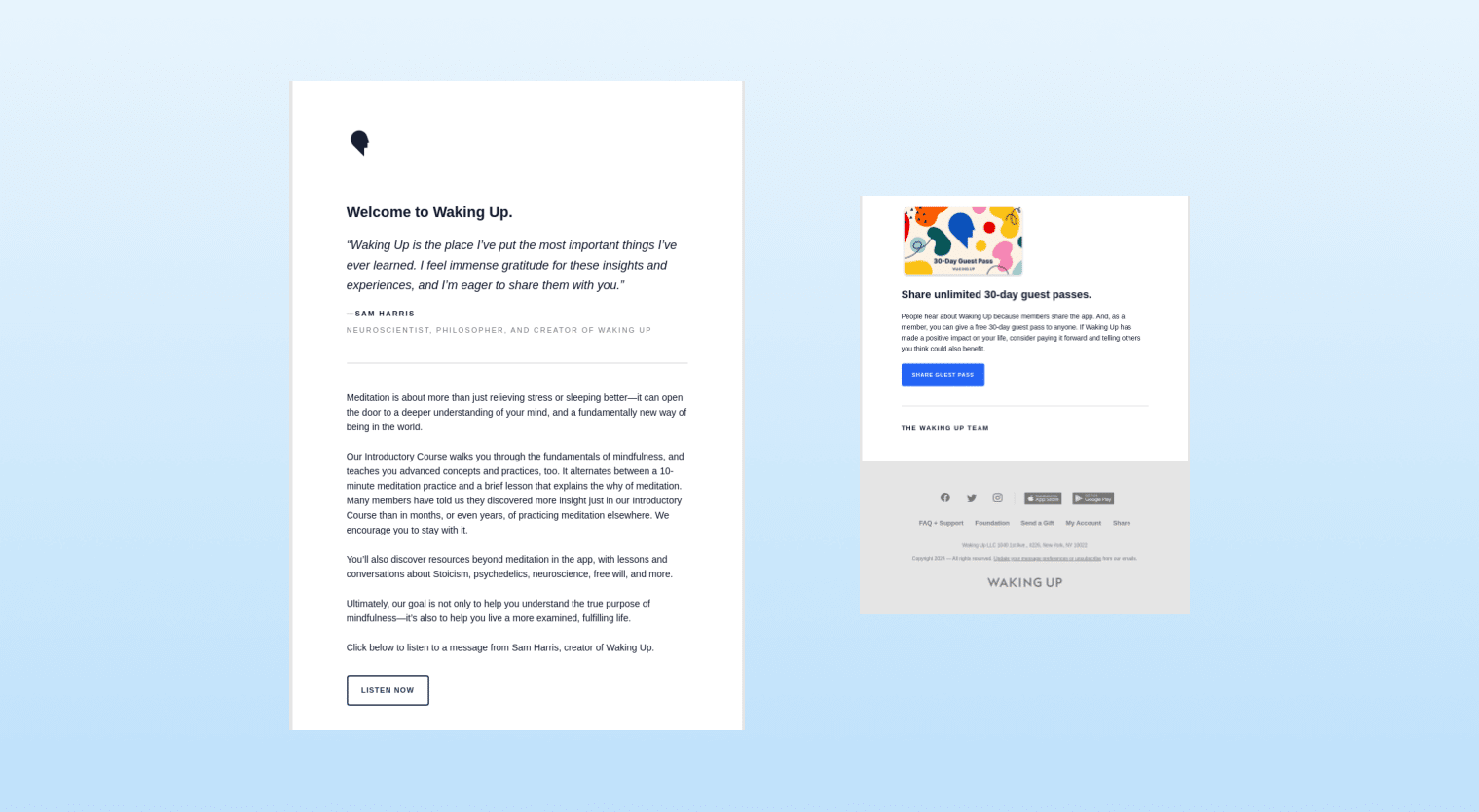
Source: Waking Up
Below, a prominent “Listen Now” CTA leads straight into content. The email also offers a guest pass (“Share 30-day guest pass”) which acts as an referral email on top on onboarding the user. By combining authority (founder’s message) with clear next steps, it humanizes the brand and encourages exploration.
Canva: Guided Introduction to Features
This onboarding email starts off with a note to welcome the user (“We’re glad you’re here”). The design is fantastic, as it quietly shows off all the creative formatting users can do with the tool.
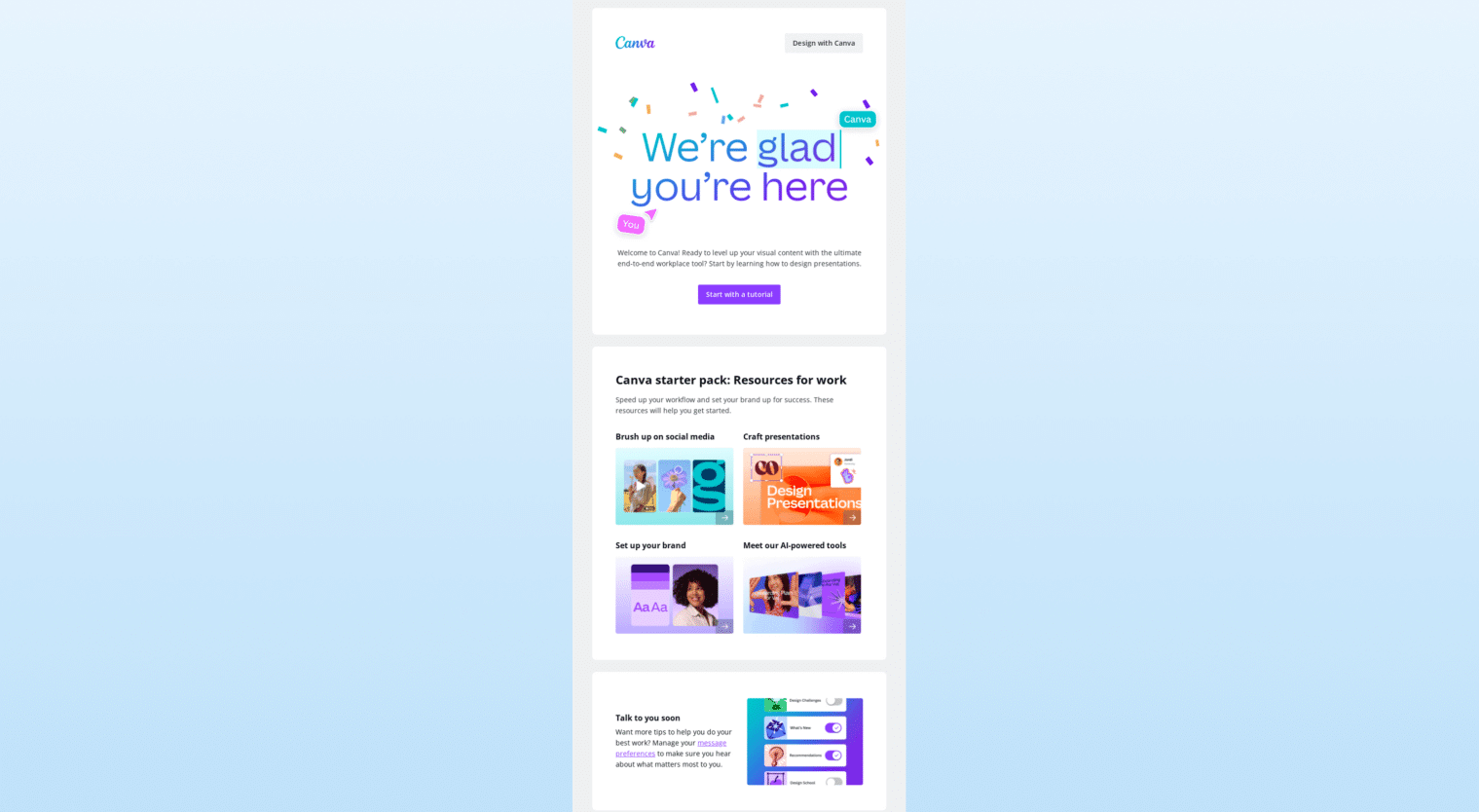
Source: Canva
Then, it offers a guided introduction to organizing brand assets, collaborating on designs, and using templates to boost productivity. The bright CTA button at the top asks the user to start a tutorial, which is a great way to help a new user get started.
Patagonia: Showcasing Brand Values
Though primarily a product promo (“All your stuff in one bag”), this email doubles as onboarding by showcasing brand values (“Earth is now our only shareholder.”). High-quality imagery of durable backpacks and a link to an environmental story emphasize Patagonia’s mission-driven approach.

Source: Patagonia
For new sign-ups, this reinforces why customers trust Patagonia—quality plus ethics.
Bite: Simple Design to Highlight Sustainable Business Practices
This email highlights Bite’s B-Corp certification (“What ‘good business’ means at Bite”). It lists three impact bullet points (plastic-free, cruelty-free, nonprofit partnerships) with a simple design.
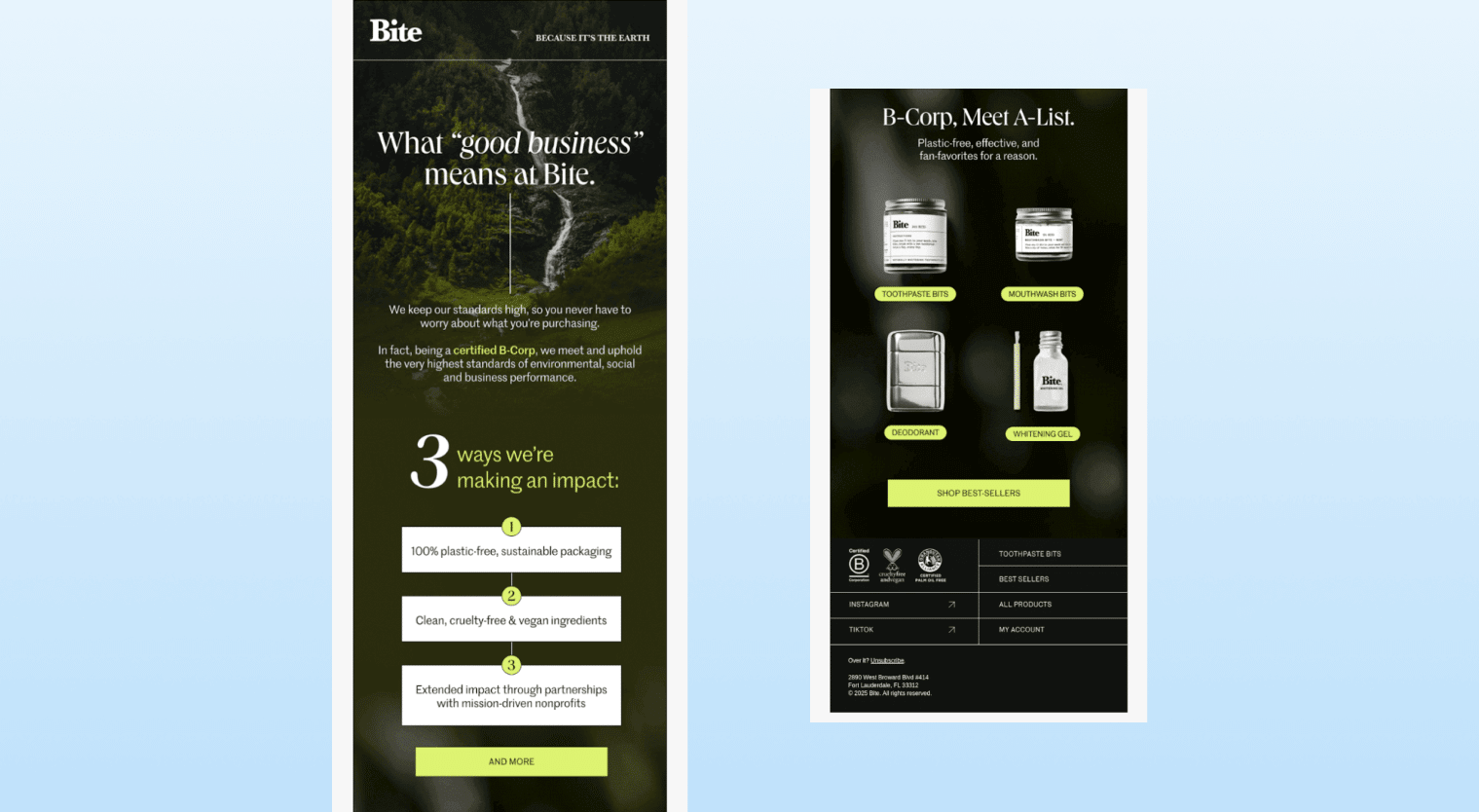
Source: Bite
By focusing on the mission and including images of products, it educates new customers about the brand’s eco-credentials. The “Shop Best-Sellers” CTA at the bottom then invites purchase.
Veja x BIMBA Y LOLA: Clean Design Focused On Their Unique Style
This onboarding email announces a special-edition sneaker launch in a clean, minimal manner. The headline and striking image of the shoe art catch the eye.
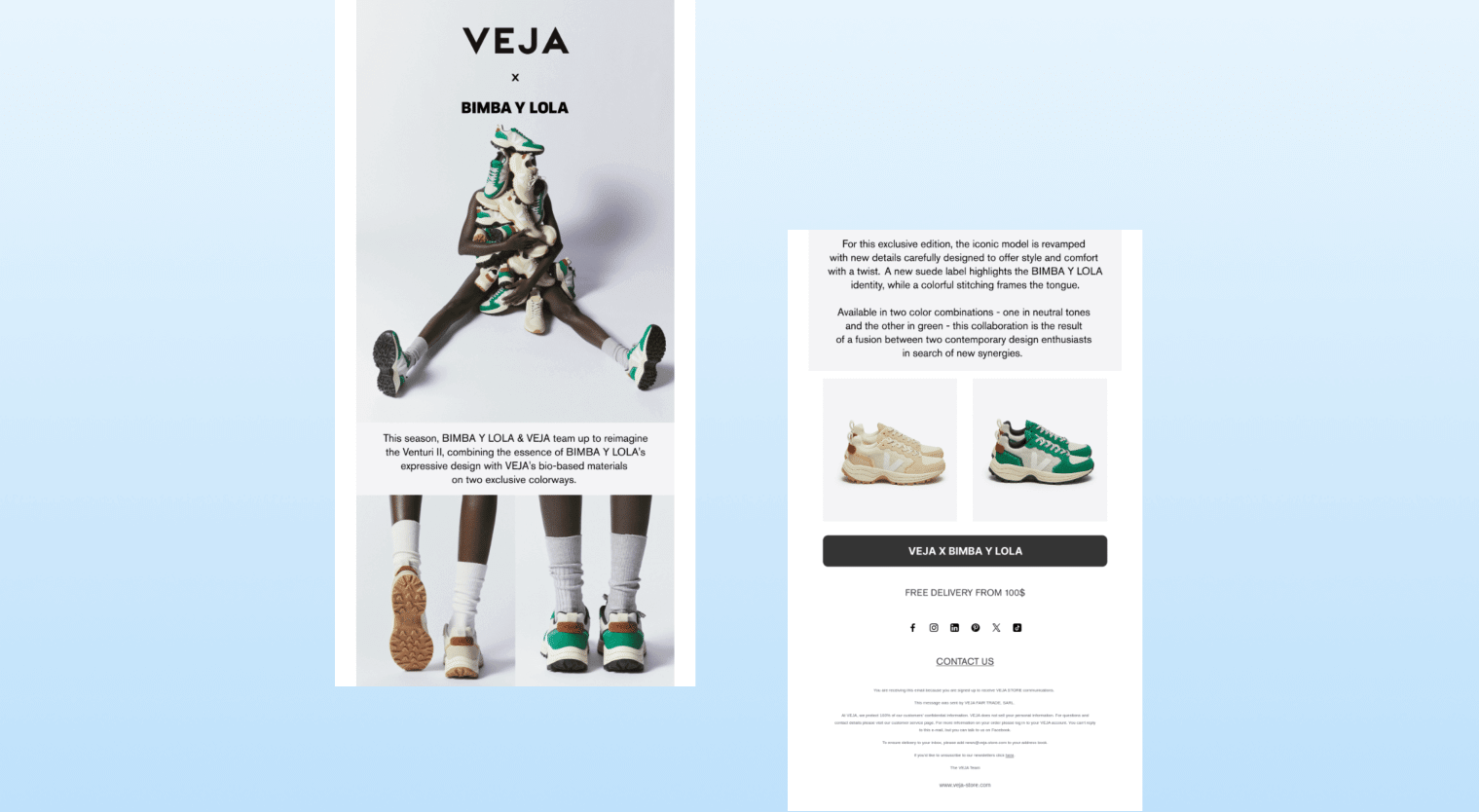
Source: Veja
Text explains the collaboration’s unique style, and a single “Veja x Bimba y Lola” button leads to the product. As an onboarding example for e-commerce email marketing, it shows how to excite customers about new features (or products) right away.
McDonald’s: Encouraging Immediate Action with Offers
A colorful email advertising a breakfast deal (“Buy One, Add One for $1”). It uses McDonald’s branding and mouth-watering food photos. The headline “Breakfast Comes First” and bright “Order Now” buttons encourage immediate action.
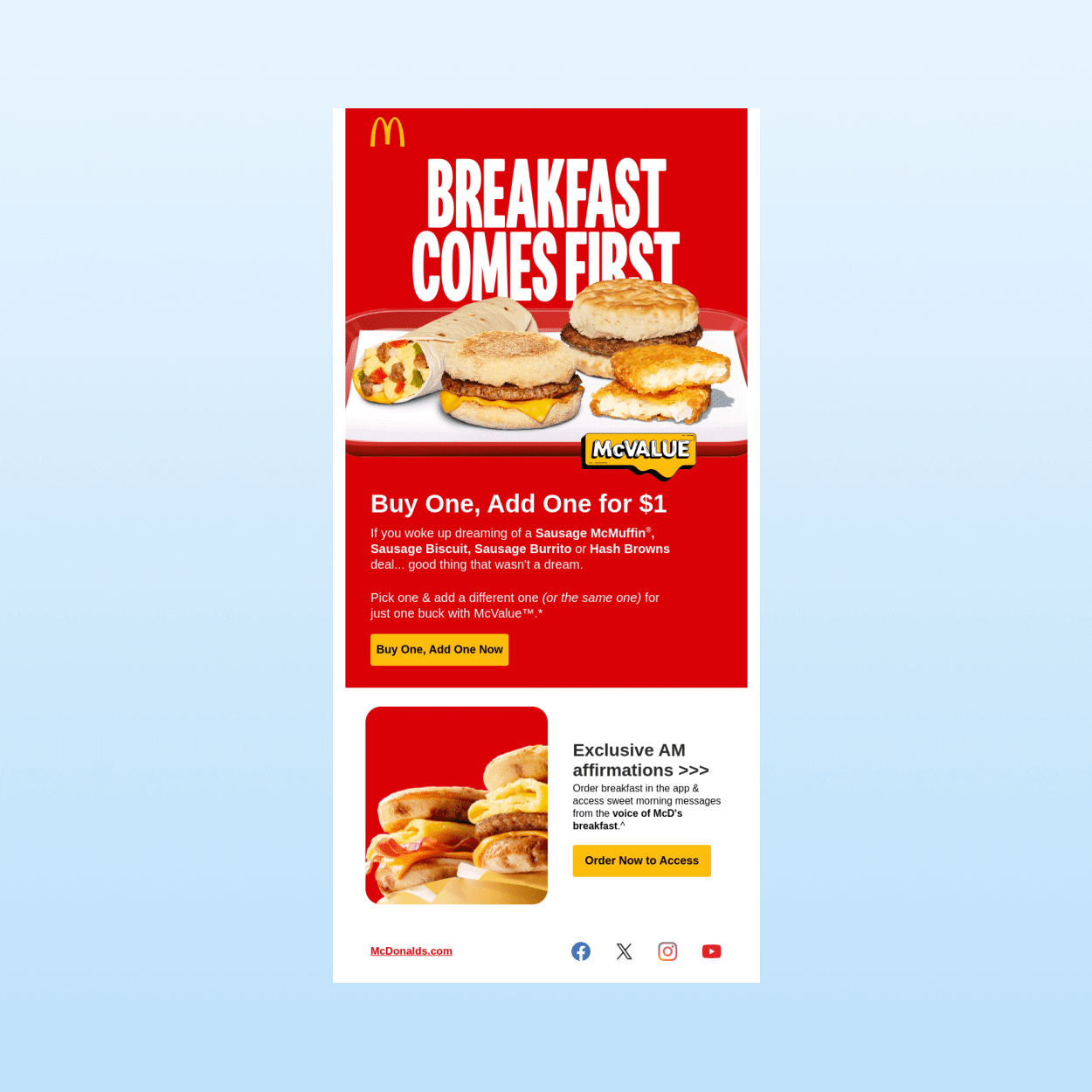
Source: McDonald’s
For new app users, this shows a relevant offer, while also prompting them to download the app and order.
Lonely Planet: Useful Content and Personalized Messaging
This onboarding email features a content-rich format from the travel publisher. It promotes a Spanish travel guide with a loud headline and scenic images of destinations. Each section has a “Shop the Edition” button.
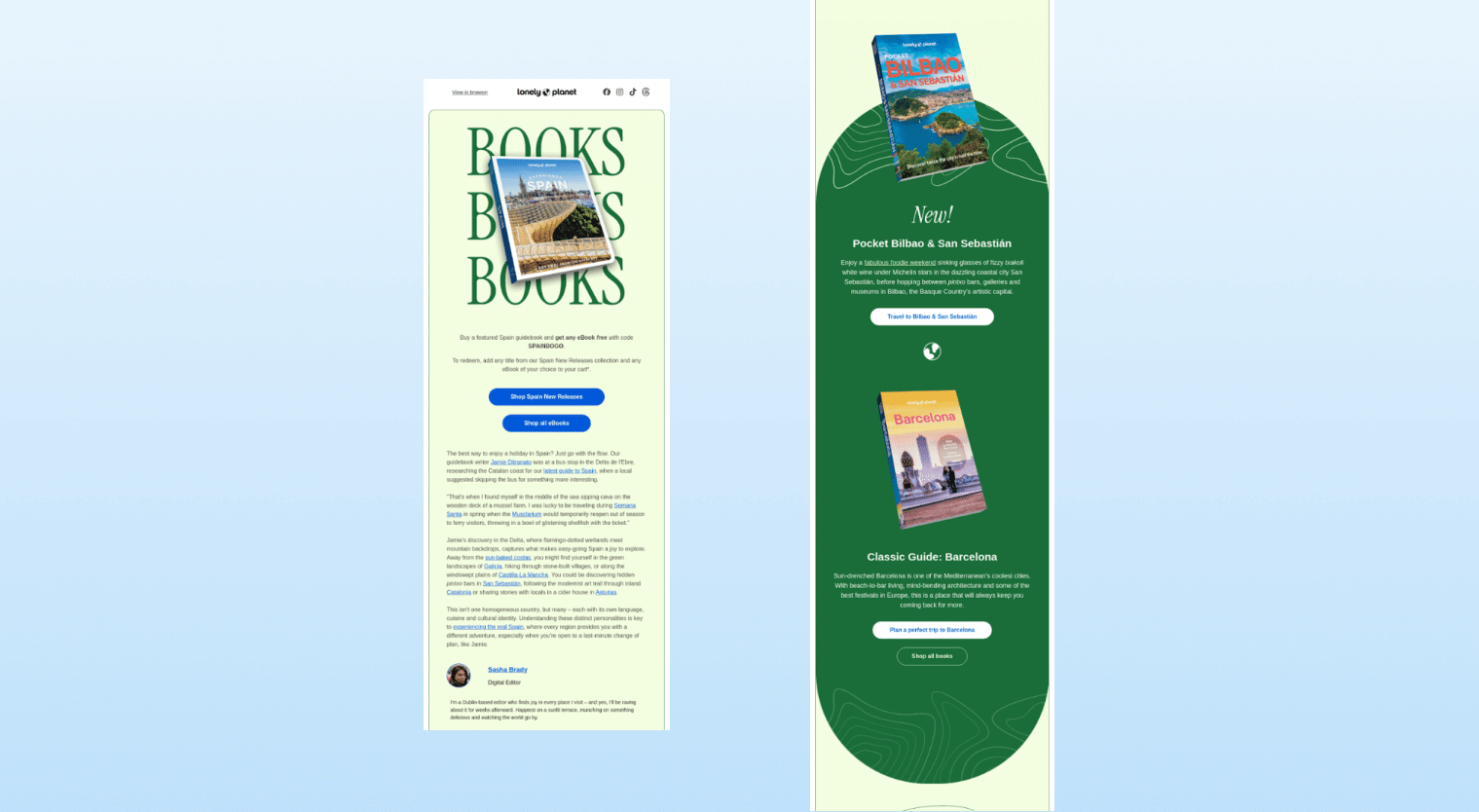
Source: Lonely Planet
As an onboarding example, it provides useful content (trip inspiration) while driving sales of specific products. The personalized message from an editor at the top (“Your next Spanish adventure…”) makes it feel like a curated recommendation.
Sundays: Newsletter-Style Email with Educational Content
Sundays shared a newsletter-style email targeting dog owners. It leads with an engaging headline and photo, multiple article teasers, and “Read More” links. This onboarding email doesn’t aim to convert immediately, but it takes its time to build a relationship with the customer.
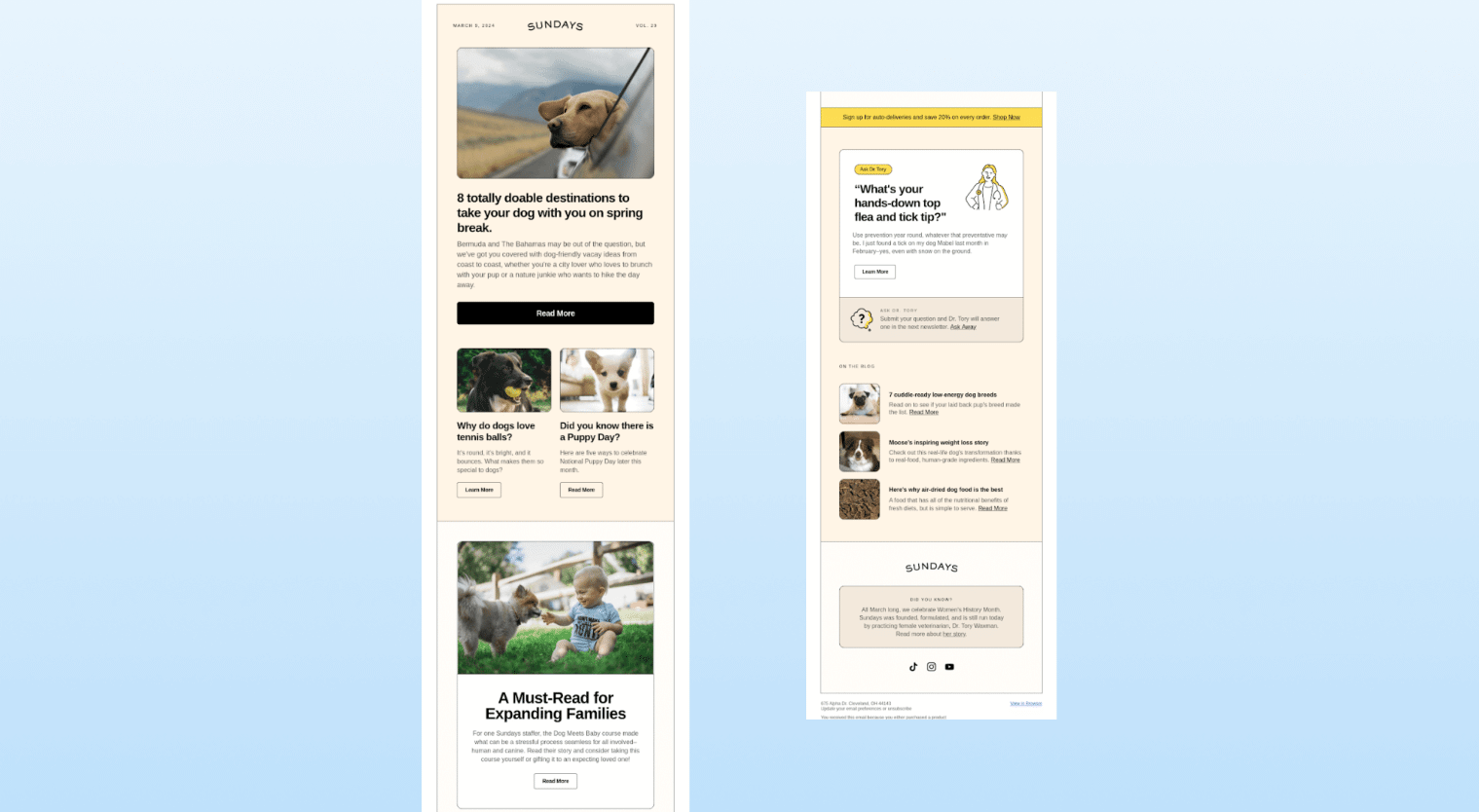
Source: Sundays
It’s a great engagement tool: it provides value and a direct line to a vet, using a CTA. It demonstrates how storytelling and useful content can keep users engaged.
Starbucks: Focused Messaging with Strong CTAs
This is a seasonal promotion email for “Pistachio season,” highlighting two new drinks with images. The pastel green design reflects the flavor theme.

Source: Starbucks
This example shows a brief, on-brand message, followed by a prompt to view the menu. It’s effective because it clearly focuses on a current offering and has a strong call to action to explore more in the app or store to boost conversions.
Speechify: Strong Social Proof and Concise Copy
Speechify nails its welcome email with a bold CTA (“Start a free trial”) and strong social proof—25M+ users and 1.7M+ days saved. It highlights key benefits like faster reading, multitasking, and natural AI voices, as well as using clean visuals and concise copy.

Source: Speechify
Bonus points for calling out ad-free listening and content skipping—clear wins for productivity-focused users.
Best Practices for Effective Customer Onboarding Emails
Beyond content and design, strong onboarding emails follow email marketing best practices. Here are key tips to maximize impact:
Personalization and Segmentation Strategies
Personalized emails feel more relevant, boosting opens and engagement. Segmented emails see significantly higher engagement: a 14.32% higher open rate for segmented vs. non-segmented campaigns. Even simple personalization (using the user’s name, or tailoring content to their region or role) makes a difference.
How to do it: Use your user data to tailor messages. For example, send different email flows to free vs. premium users or beginners vs. experienced users.
CleverTap’s advanced segmentation allows you to slice users by customer demographics, behavior, and real-time events. Combine this with CleverTap’s email personalization tool that offers dynamic content tags to insert user-specific information. For instance, if a fitness app knows a user likes yoga, the onboarding emails can highlight yoga-related features.
With CleverTap, you can automatically trigger emails when users hit certain events or thresholds (e.g., profile completion), ensuring the right message reaches the right person. This targeted approach drives higher leads through email marketing.
Timing and Frequency Considerations
Timing can make or break engagement, so it is important to consider this when building your email marketing strategy. Immediately after signing up, users expect a prompt welcome. Following that, use drip campaigns for the rest of the sequence at a sensible pace (e.g., Day 1, Day 3, Day 7). Too many emails too fast can annoy users; too few, too slow, and they may forget you.
How to do it: Use behavior-based triggers. For example, send a friendly reminder if a user hasn’t logged in within 2 days of sign-up. Or if they complete a purchase, follow up with tips on using the product.
CleverTap lets you set up automated event-based campaigns. You can also schedule a pause/delay between emails, or stop the sequence early if the user converts.
Clear and Compelling CTAs
Every onboarding email should have one crystal-clear goal and a CTA button that stands out. Ambiguous or hidden CTAs hurt engagement.
How to do it: Use email copywriting best practice and write a CTA that explicitly tells the user what to do next (“Start Setup,” “Watch Intro Video,” “Shop Now,” etc.). Use contrasting button colors and place them above the fold if possible. Limit each email to 1–2 CTAs to avoid confusion. CleverTap’s AI email marketing capabilities uses Scribe to suggest the best performing copy to help you get higher click-through rates.
Mobile Optimization and Responsive Design
Over half of emails are opened on mobile devices. A clunky or unreadable email will reduce onboarding engagement. Ensure fonts, images, and buttons scale for small screens. A responsive design means users see the same effective CTA whether on a phone or a desktop.
How to do it: Use a mobile-first template or service that automatically adjusts the layout. Keep subject lines short (so they don’t truncate on mobile preview). Keep pre-header text meaningful (so phone users see that too). In the body, use single-column layouts and large tappable buttons. Test your emails on multiple devices and clients to boost email ROI.
CleverTap’s email templates ensure mobile-friendly emails and responsive design out of the box. The builder allows easy preview on mobile and desktop. It provides inbox previews and spam diagnostics, so you can catch any rendering issues before sending. It also supports AMP for Email, enabling interactive email elements (like carousels) right inside the email for a richer mobile experience.
Email List and Deliverability
A healthy email list and strong email deliverability ensure that your onboarding emails actually reach the inbox and get noticed. Poor list hygiene or deliverability issues can lead to emails landing in spam, hurting engagement and reputation. Clean lists and proper sending practices directly improve open rates and response.
How to do it: Regularly clean your email list by removing invalid, bounced, or inactive addresses. Use double opt-in to ensure subscribers truly want to hear from you. Monitor sender reputation and authenticate emails with SPF, DKIM, and DMARC to boost inbox placement.
With CleverTap, you can maintain list hygiene using automated suppression lists to prevent sending to unengaged or invalid users. Real-time analytics let you track bounce rates, open rates, and spam complaints to proactively fix issues to improve email deliverability.
A/B Testing and Performance Tracking
Guessing what works wastes time. A/B testing lets you optimize subject lines, visuals, and content. For example, you might find that “Start Your Trial” outperforms “Learn More”. And once emails are live, you need to measure open rates, clicks, conversions, and even downstream metrics (like activation rate).
How to do it: Always test one variable at a time (e.g., button color, subject line, copy length). Send each variant to a sample (e.g., 10% of your list) and automatically let the winner run on the rest. Track key metrics such as email open rates, CTR, and conversion events. Use those insights to iterate on future sequences.
CleverTap supports email A/B testing. You choose what percentage of users see each version; the email marketing platform automatically declares a winner based on opens or clicks, then sends the best one to the remaining users. Afterward, the dashboard gives real-time analytics on each variant’s performance. This helps identify which subject line or call-to-action drives the most email conversion rates.
Learn how CleverTap can help you personalize and automate your onboarding email sequences.
How Styl Saw a 200% Increase in Click-Through Rates Using Onboarding Emails
Styl, a mobile app for booking salon appointments, faced challenges in increasing user engagement, boosting click-through and conversion rates, and minimizing app uninstalls.
Solution:
Using CleverTap’s analytics, Styl identified that sending an onboarding email eight hours post-installation yielded the highest engagement. They implemented a pre-built ‘Welcome User’ campaign that included a coupon and highlighted the app’s benefits.
Results:
This approach led to a 200% increase in click-through rates and doubled conversions. Additionally, using a call-to-action like “Add a Coupon” reduced uninstall rates below their 38% goal. For users who had uninstalled the app, a personalized email from the CEO achieved an 81% open rate, with recipients providing feedback on their pain points.clevertap.com
By utilizing CleverTap’s email automation tools, Styl effectively addressed their engagement challenges, resulting in improved user retention and satisfaction.
Read the full case study here.
Boost Activation and Retention Using Creative Onboarding Emails
The best onboarding emails are not set-and-forget. They involve testing, measuring, and refining. Features like segmentation and A/B testing in CleverTap make it easier to personalize at scale and learn what truly resonates. Always use data-driven email marketing and iterate—your next email can perform even better.
By crafting a thoughtful onboarding email strategy—using these types of emails and following best practices—you’ll boost activation and retention. New customers will feel guided and valued from day one. Strong onboarding sets the tone for the entire customer relationship.
During the holiday season, customers are already in a buying mindset, making it the perfect time to ramp up your onboarding emails and maximize engagement. Explore 4th of July email marketing, Halloween email marketing, Thanksgiving email marketing, Black Friday email marketing, Cyber Monday email marketing, Christmas email marketing, and December email newsletter examples for inspiration.
Shivkumar M 
Head Product Launches, Adoption, & Evangelism.Expert in cross channel marketing strategies & platforms.
Free Customer Engagement Guides
Join our newsletter for actionable tips and proven strategies to grow your business and engage your customers.

